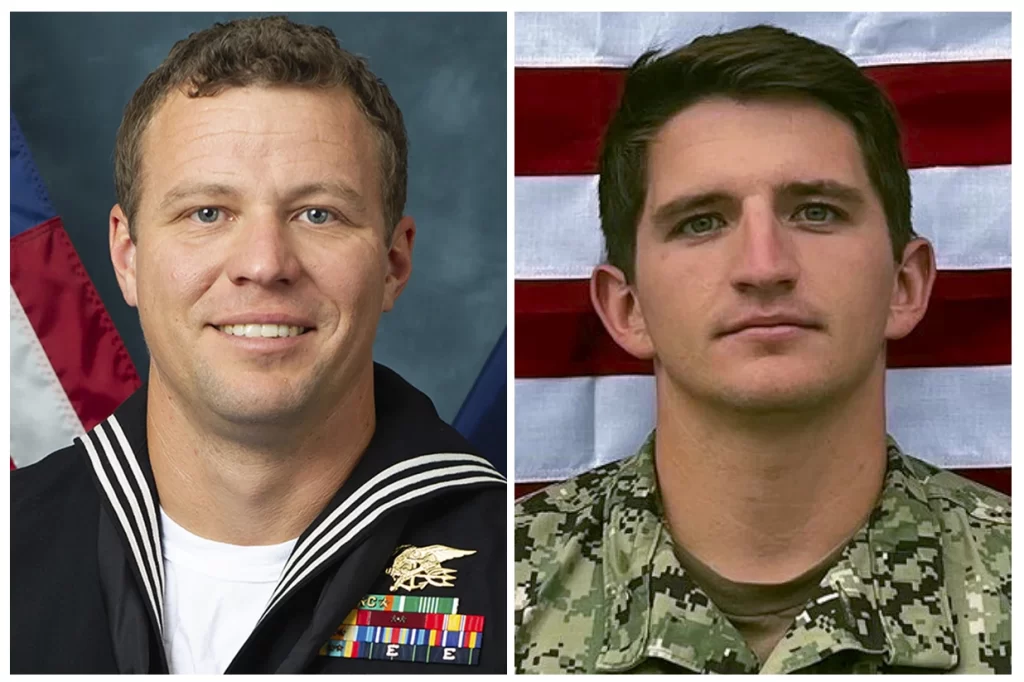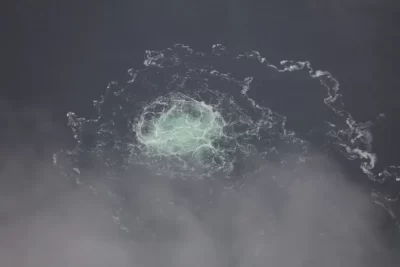
WASHINGTON — Two U.S. Navy SEALs drowned as they tried to climb aboard a ship carrying illicit Iranian-made weapons to Yemen because of glaring training failures and a lack of understanding about what to do after falling into deep, turbulent waters, according to a military investigation into the January deaths.
The review concluded that the drownings of Chief Special Warfare Operator Christopher J. Chambers and Navy Special Warfare Operator 1st Class Nathan Gage Ingram could have been prevented. But both sank quickly in the high seas off the coast of Somalia, weighed down by heavy equipment they were carrying and not knowing or disregarding concerns that their flotation devices could not compensate for the additional weight. Both were lost at sea.
The highly critical and heavily redacted report — written by a Navy officer from outside Naval Special Warfare Command, which oversees the SEALs — concluded there were “deficiencies, gaps and inconsistencies” in training, policies, tactics and procedures as well as “conflicting guidance” on when and how to use emergency flotation devices and extra buoyancy material that could have kept them alive.
The Associated Press obtained the report upon request before its public release.
The mission’s goal was to intercept weapons headed to the Iranian-backed Houthis in Yemen, who have been launching missile and drone attacks against commercial and U.S. Navy ships in the Red Sea and Gulf of Aden since the Israel-Hamas war in Gaza began a year ago. U.S. retaliatory strikes have so far not deterred their assaults.
Mission gone wrong
Chambers and Ingram, members of SEAL Team 3, died during a nighttime mission to board an unflagged ship in the Arabian Sea. Their names were redacted in the report, but officials have confirmed Chambers slipped and fell as he was climbing onto the ship’s deck and Ingram jumped in to try to save him.
“Encumbered by the weight of each individual’s gear, neither their physical capability nor emergency supplemental flotations devices, if activated, were sufficient to keep them at the surface,” Rear Adm. Michael DeVore wrote in the report.
The report said Chambers was “intermittently” at the surface for 26 seconds after his fall and Ingram was at the surface for about 32 seconds.
“The entire tragic event elapsed in just 47 seconds and two NSW warriors were lost to the sea,” DeVore wrote, referring to Naval Special Warfare Command.
Flotation equipment that was properly maintained, working well and used correctly would have been able to keep them afloat until they were rescued, the report said. Other team members told investigators that while they knew the importance of their tactical flotation system — which includes two inflatable floats that attach to a belt and foam inserts that can be added — few had ever operated one in training and there is little instruction on how to wear it.
The report said the team was operating in 6- to 8-foot seas, and while the vessel they were boarding was rolling in the waves, the conditions were well within their abilities.
As time went on, however, the rolling increased, and Chambers tried to board by jumping from his combat craft’s engine compartment to the top rail of the ship they were boarding, the report said. Some of the commandos used an attachable ladder, but because of the waves, others jumped to the top rail, which they said was within reach but slippery.
Chambers’ hands slipped off the rail, and he fell 9 feet into the water. Based on video of the mission, he was able to grab the lower rung of the ladder, but when he turned to try to get back to the combat craft, he was swept under by a wave.
Eleven seconds after he fell, Ingram jumped in. For at least 10 seconds, video shows they were above water intermittently and at times were able to grab a ladder extension that was submerged. But both were knocked about by waves. The last sighting of Chambers was about 26 seconds after he fell.
At one point, Ingram tried to climb back on the ladder but was overcome by a wave. He appeared to try to deploy his flotation device, but within two seconds, an unattached water wing was seen about a foot away from him. He also seemed to try to remove some of his equipment, but he slipped underwater and was not seen again. The sea depth was about 12,000 feet.




